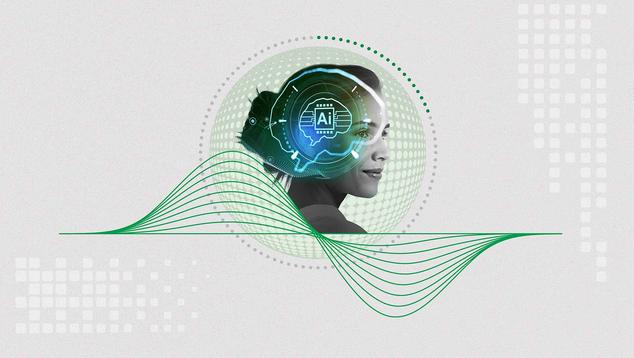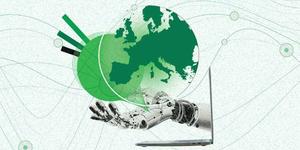C-suite leaders are captivated by AI’s potential to increase productivity, from generating insights to automating routine tasks. But many studies suggest technology works best when it complements human effort, not when it replaces it.
Economic research over several decades1 confirms that large productivity gains happen when new tools strengthen workers’ skills, judgment and creativity within supportive organizations. In a 2002 study of U.S. firms, economists found that installing information technology had little effect on productivity unless companies simultaneously reorganized work and upskilled employees. Firms that introduced computers alongside complementary changes — like decentralizing decision-making and expanding workers’ responsibilities — saw real gains, whereas those implementing tech without such organizational innovation saw negligible benefits.
“Awesome technology alone is not enough. What you really need is to update your business processes, reskill your workforce, and sometimes even change your business model and organization in a big way,”2 said Erik Brynjolfsson, a professor of economics and director of the Digital Economy Lab at Stanford University.

The Human Factor
Why is human support essential? AI excels at recognizing patterns and making predictions, but people provide the context, intuition and ethics. The most powerful results happen when each does what it does best.
Recent research on generative AI shows this in action. One experiment found that professionals given access to ChatGPT were 37% more productive on writing tasks, with the greatest benefits for less-experienced workers. The tool handled first drafts, freeing employees to focus on higher-value editing and idea development. Instead of replacing workers, AI expanded their abilities and narrowed skill gaps. Employees also reported greater satisfaction as tedious work led to more engaging work. Other research has replicated this result on larger samples of workers in entirely different settings.
A 2021 study using Gallup data found similar benefits for employees: Technology innovation had a positive effect on worker wellbeing, but mainly for employees who say their boss creates a trusting work environment.
In contrast, pursuing AI without equal focus on people often leads to underwhelming results and added organizational risks. Still, many companies fall into this trap. Last year, Gallup found that 93% of Gallup’s CHRO roundtable members said their organizations had started using AI, but only 15% of U.S. employees said their employer had communicated a clear plan for integrating AI into their work. What slows digital transformation may not be the tools — it may be how people feel about those leading the change.
Designing a Human-AI Future
In a seminal 2024 article led by David Autor studying the composition of work activities between 1940 and 1980, new types of jobs usually appear when technology helps people work more efficiently or when there is a high demand for certain skills. As a result, the tasks that we see today do not reflect the gamut of work next year, and leaders should treat AI as a force multiplier for human ingenuity to unlock the products of the future. So how can leaders use AI to elevate what people do best? Some successful companies offer a guide:
- Invest in skills, training and habits of leveling up. Beyond specific skills, organizations benefit when employees develop persistence and resilience. Other research shows that workers in jobs requiring greater intellectual tenacity — broadly referring to grit and ambition — are better protected from major disruptions, even when accounting for skill and education levels. Leaders who model and promote continuous learning and improvement help create a workplace where technology strengthens, rather than sidelines, people.
- Redesign jobs and workflows to support human-AI collaboration. Simply adding AI to current processes often results in small gains. To see meaningful improvement, organizations should rethink how work is done. Let AI take on repetitive, data-heavy tasks and allow employees to focus on what people do best: creativity, complex problem-solving, interpersonal communication and nuanced decision-making. Many banks, for instance, now use AI to process paperwork for loans so that bankers can spend more time advising clients.
- Foster a culture of curiosity. Make it clear that AI is there to help employees, not reduce staff. Involve workers early by asking how AI could improve their work and the business overall. When employees help shape AI tools, they are more likely to support and use them.
The success of any AI initiative depends on the people, starting with whether employees feel that management creates a trusting work environment that is safe to experiment in. AI can help with tasks and generate insights, and sometimes even play a role in validating results, but humans have a competitive edge in connecting with customers through empathy, applying creativity to shape and use AI-driven ideas, and developing the tasks of the future. While focusing on people might seem to slow initial deployment in favor of confronting structural organizational issues at first, it sets the stage for real, lasting progress.
Keep people at the center of your AI strategy.
- Learn more about Gallup’s people-first approach to AI adoption.
- Find out how to answer the top three questions about AI in the workplace.
- Discover why your AI strategy needs a strong workplace culture to succeed.




